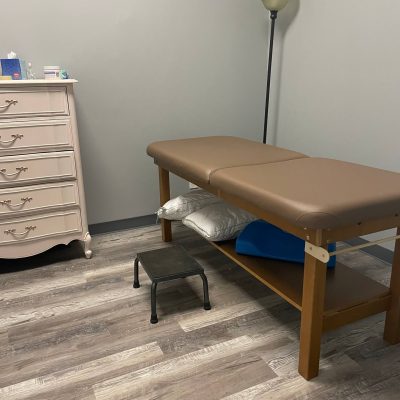Sexually transmitted diseases (STDs) are a significant public health concern in the United States, affecting millions of individuals each year. According to data from the Centers for Disease Control and Prevention (CDC), STDs are among the most commonly reported infectious diseases in the United States. Each year, millions of new cases of STDs are diagnosed, highlighting the widespread nature of these infections. There are several types of STDs, each with its own prevalence rates. Some of the most common STDs in the United States include chlamydia, gonorrhea, syphilis, herpes simplex virus (HSV), human papillomavirus (HPV), and human immunodeficiency virus (HIV).
Chlamydia is one of the most frequently reported STDs in the U.S. It is caused by the bacterium Chlamydia trachomatis and can affect both men and women. The CDC estimates that over 1.8 million cases of chlamydia were reported in 2020 alone. Gonorrhea is another common bacterial STD that can affect various parts of the body, including the genitals, rectum, and throat. In recent years, gonorrhea rates have been rising, with over 600,000 cases reported in 2020. This widespread incidence of STDs has significant implications on public health.
Dealing with a sexually transmitted disease (STD) can be a challenging and often emotionally draining experience. Beyond the medical treatment, many individuals may not realize the potential long-term impact an STD can have on their pelvic health. In this blog post, we’ll delve into why it’s crucial to consider seeing a pelvic floor therapist after experiencing an STD.
Understanding Pelvic Floor Health:
Before we discuss the connection between STDs and pelvic floor therapy, it’s essential to understand the role of the pelvic floor. The pelvic floor refers to a group of muscles, ligaments, and connective tissues that support pelvic organs such as the bladder, uterus, and rectum. These muscles play a vital role in various bodily functions, including bladder and bowel control, sexual function, and overall pelvic stability.
Impact of STDs on Pelvic Health:
Sexually transmitted diseases (STDs) can have a significant impact on the pelvic floor, leading to various pelvic floor dysfunctions and complications. Here’s an expanded look at how STDs can affect the pelvic floor:
- Pelvic Inflammatory Disease (PID): STDs such as chlamydia and gonorrhea can cause pelvic inflammatory disease (PID). When left untreated PID is characterized by inflammation of the female reproductive organs, including the uterus, fallopian tubes, and ovaries. The inflammation can spread to surrounding tissues, including the pelvic floor muscles, leading to pelvic pain, discomfort, and potential scarring.
- Chronic Pelvic Pain: STDs, particularly those causing PID or genital ulcers (e.g., herpes simplex virus), can contribute to chronic pelvic pain. Inflammation, scarring, and nerve sensitization in the pelvic region can result in persistent pain that affects daily activities and quality of life.
- Pelvic Floor Muscle Tension: STDs can lead to pelvic floor muscle tension and spasms. Conditions like genital herpes, which cause pain and discomfort in the genital area, can result in involuntary muscle contractions as the body’s response to pain. Over time, this muscle tension can contribute to pelvic floor dysfunction, including pelvic floor hypertonicity (increased muscle tone).
- Urinary and Bowel Dysfunction: Some STDs can affect bladder and bowel function, leading to urinary and bowel dysfunction. For example, an STD may result in urinary urgency, frequency, incontinence, or difficulty emptying the bladder. Similarly, it can lead to bowel issues such as constipation, fecal incontinence, or difficulty with bowel movements.
- Sexual Dysfunction: STDs and their associated symptoms, such as pain during intercourse (dyspareunia), genital discomfort, or changes in sexual function, can contribute to sexual dysfunction. Pelvic floor muscle tension, scarring, and psychological factors related to STD diagnosis and treatment can impact sexual desire, arousal, and satisfaction.
- Pelvic Organ Prolapse: In severe cases, chronic inflammation, scarring, and weakening of pelvic floor support structures due to untreated STDs can contribute to pelvic organ prolapse. This condition occurs when pelvic organs, such as the uterus, bladder, or rectum, descend or protrude into the vaginal canal due to inadequate support from the pelvic floor muscles and connective tissues.
- Emotional and Psychological Impact: Dealing with an STD can be emotionally distressing, leading to anxiety, depression, and stress. These psychological factors can contribute to pelvic floor dysfunction by influencing muscle tone, exacerbating pain perception, and affecting overall pelvic health.
Why See a Pelvic Floor Therapist?
- Comprehensive Assessment: A pelvic floor therapist can conduct a thorough assessment to evaluate pelvic floor muscle tone, strength, and coordination. This assessment may include internal exams (with consent) to assess the internal pelvic muscles directly.
- Tailored Treatment Plans: Based on the assessment findings, the therapist can develop a personalized treatment plan to address specific pelvic floor issues. This plan may include exercises to strengthen weak muscles, relaxation techniques for tense muscles, and strategies to improve pelvic floor coordination.
- Addressing Pain and Discomfort: Many individuals with STDs experience pelvic pain, discomfort during intercourse, or urinary/bowel issues. A pelvic floor therapist can provide techniques such as manual therapy, biofeedback, and therapeutic exercises to alleviate these symptoms.
- Sexual Health Support: Pelvic floor therapists are trained to address sexual health concerns. They can help individuals regain confidence and improve sexual function post-STD by addressing physical and emotional factors affecting intimacy.
- Preventing Long-Term Complications: Early intervention through pelvic floor therapy can help prevent long-term complications such as chronic pelvic pain, pelvic organ prolapse, and urinary incontinence that may result from untreated pelvic floor dysfunction.
In conclusion, seeing a pelvic floor therapist after experiencing an STD is crucial for comprehensive pelvic health management. These specialized therapists can provide tailored assessments, treatments, and support to address pelvic floor dysfunction resulting from STDs. By prioritizing pelvic floor health, individuals can improve their quality of life and prevent potential long-term complications. If you’ve had an STD or are experiencing pelvic health issues, don’t hesitate to consult with a qualified pelvic floor therapist for personalized care and support.







